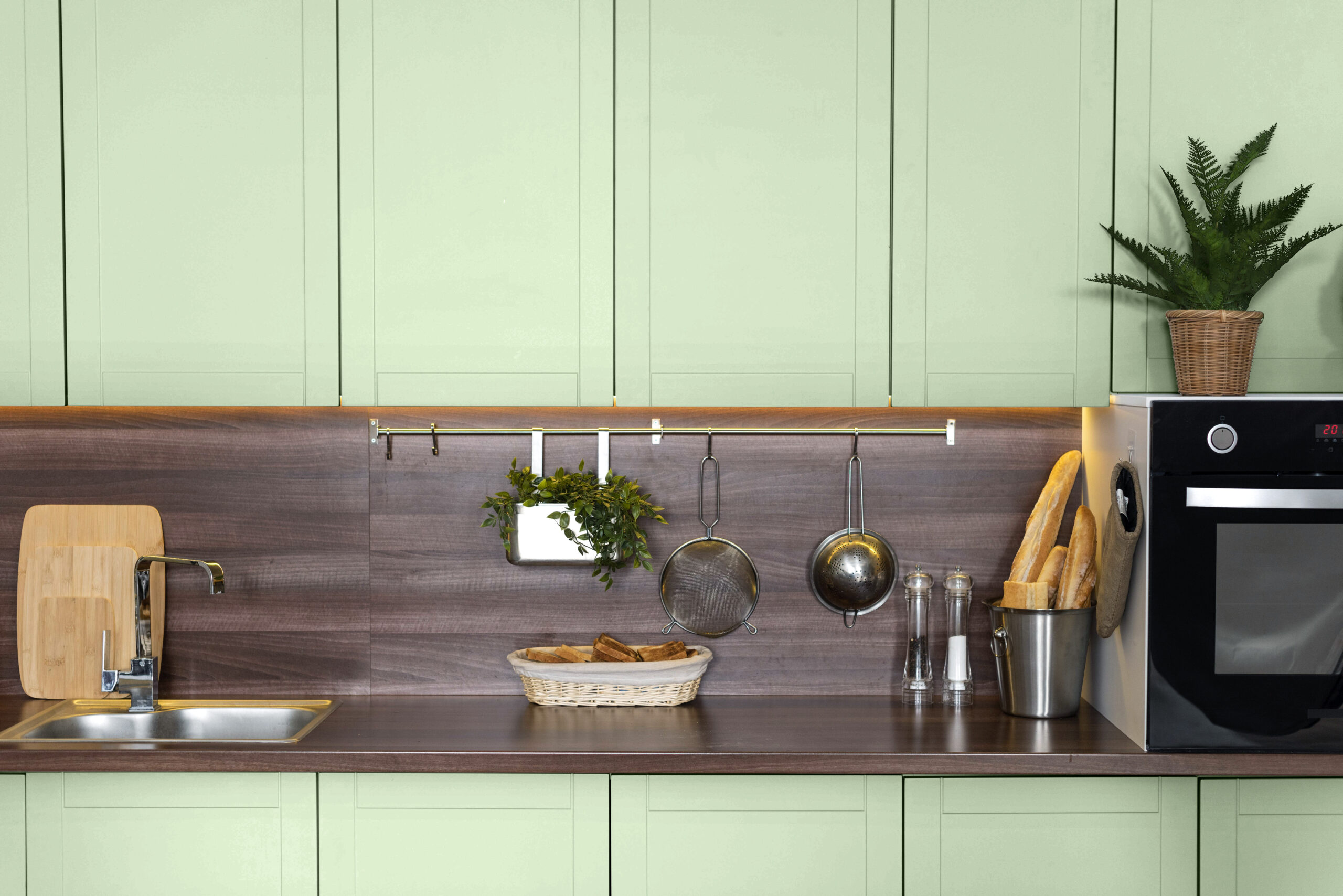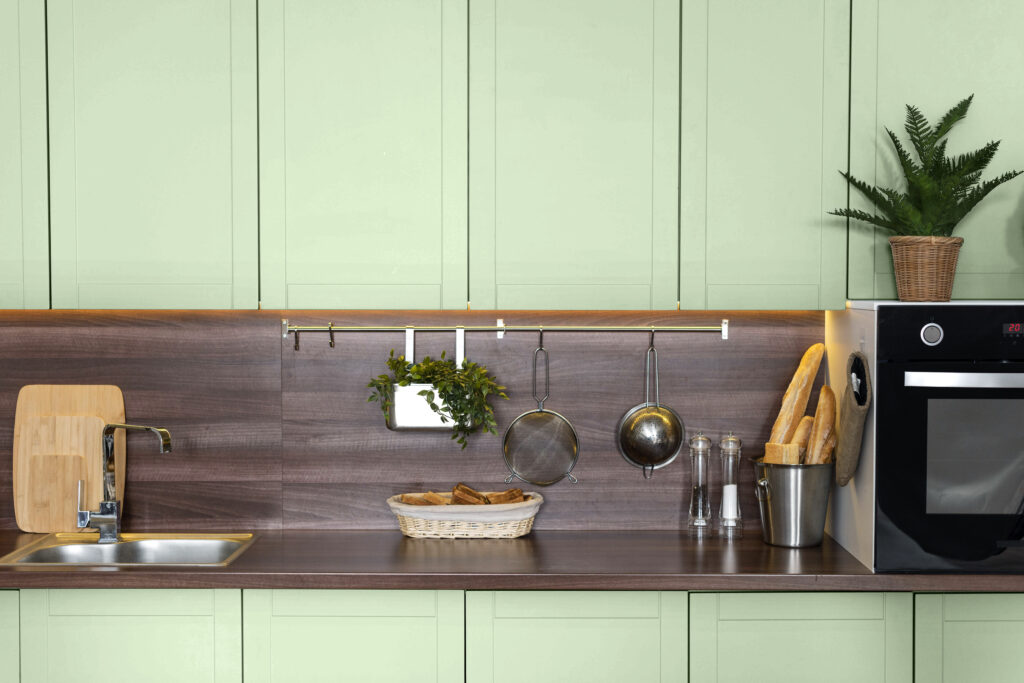Installing countertops comes with a good amount of dos and don’ts that should be followed to ensure a smooth and seamless installation process. Here are 4 important details that should be paid attention to during the installation process.
Dos
Installing Countertops #1: Using Appropriate Tools

When it comes to installing countertops, it is very important to make sure that the right tools are used as this helps ensure a smooth, accurate and successful installation. The right tools will not only allow installation to go smoothly, but is also a key way to prevent damage to the newly purchased countertops or to the surrounding items within the space.
Start by using actual measuring tools such as a tape measure and leveller as this helps to make sure that all the measurements of the installation area is accurate and that all the required information is obtained. A fine-toothed blade is essential for properly cutting materials such as granite, quartz or laminate because it provides a more clean and precise cuts that will not cause any other damage on the countertop material.
Clamps are essential for use during assembly as this tool helps prevent movement that can cause misalignment or gaps during installation. In addition, a sealant will be needed to fill the gaps between the worktops and the walls to ensure that water does not seep through and penetrate — which may cause further damage in the long run. Furthermore, using a high-quality adhesive recommended by the countertop manufacturer also greatly helps with installation and ensures that there will be no structural or damage issues caused by improper installation. Also, it is good to have a knife handy so that it can be used to cut through any loose or sticky material that can complicate the installation process.
Investing and using proper tools can ensure that the installation process of countertops to be done efficiently — making sure that the finished product looks aesthetically pleasing and performs efficiently as a vital part of the kitchen space. The right choice and use of materials not only increases the durability and beauty of the countertops but also creates a professional and aesthetic look that can stand the test of time.
Installing Countertops #2: Taking Accurate Measurements

Correct measurements are an important part of installing a countertop and it is extremely important to follow through this step as it can determine the look, fix and end product after installation. The accuracy of the measurements ensures the countertop fits the intended space properly; thus, minimising any errors or gaps and ensuring a flawless installation process.
Start by measuring the length and width of the kitchen floor area using a tape measure. It is important to measure properly to ensure accuracy as this also helps to take into consideration about to imperfections on the walls, floors or even the surrounding cabinets — important factors when it comes to planning and executing countertop installation. Additionally, when measuring areas for specific inserts such as sinks or stoves, consider the size and space required and make sure that it takes into account any present flows (if any) and that it suits the current or intended kitchen set up.
@ampquartz 𝙃𝙖𝙩𝙞 𝙨𝙪𝙙𝙖𝙝 𝙢𝙚𝙧𝙙𝙚𝙠𝙖, 𝙙𝙖𝙥𝙪𝙧 𝙗𝙞𝙡𝙖𝙠𝙖𝙝 𝙡𝙖𝙜𝙞? 𝗣𝗥𝗢𝗠𝗢 𝗞𝗔𝗕𝗜𝗡𝗘𝗧 𝗠𝗘𝗥𝗗𝗘𝗞𝗔 𝗦𝗘𝗥𝗘𝗡𝗗𝗔𝗛 𝗥𝗠𝟳, 𝟵𝟵𝟵? 𝗤𝘂𝗮𝗿𝘁𝘇 𝗰𝗼𝘂𝗻𝘁𝗲𝗿𝘁𝗼𝗽 𝗽𝗲𝗿𝗰𝘂𝗺𝗮? 😱𝐒𝐄𝐑𝐈𝐎𝐔𝐒𝐋𝐀𝐇?! Sempena Merdeka bulan ni, mehler pakat dengan shuben renovate kitchen cabinet rumah korang tu! Sebab apa bulan ni special? Sebab untuk dua jenis kabinet, korang boleh dapatkan dalam harga bawah RM8K sahaja wei! Lepastu, Quartz countertop pun percuma wei! Mana ada tempat lain nak jual harga gempak macam nii~ 𝐏𝐚𝐤𝐞𝐣 𝐧𝐢 𝐭𝐞𝐫𝐦𝐚𝐬𝐮𝐤 𝐣𝐮𝐠𝐚 𝐛𝐚𝐫𝐚𝐧𝐠 𝐝𝐚𝐩𝐮𝐫 𝐟𝐫𝐞𝐞 𝐬𝐞𝐩𝐞𝐫𝐭𝐢; 🔸Stainless Steel Sink 🔸Pull Out Tap 🔸Soft Closing Hinge 🔸Upgrade to 40mm Double Profile 🔸Stainless Steel Dish Rack ️ 🔸Cutlery Tray 🔸Spice Rack 🔸Gas Tray Beli SEKARANG dengan 0% ansuran sehingga 24 bulan. 𝐉𝐚𝐧𝐠𝐚𝐧 𝐥𝐞𝐩𝐚𝐬𝐤𝐚𝐧 𝐭𝐚𝐰𝐚𝐫𝐚𝐧 𝐌𝐀𝐒𝐀 𝐓𝐄𝐑𝐇𝐀𝐃 𝐢𝐧𝐢!⏱️ 𝐁𝐨𝐨𝐤 𝐜𝐮𝐬𝐭𝐨𝐦 𝐜𝐚𝐛𝐢𝐧𝐞𝐭 𝐣𝐨𝐦! 📞 +6017 732 0149 (Jasmine) +6010 707 7815 (Lekha) https://go.wa.link/ampquartz 📍𝐉𝐨𝐦 𝐭𝐞𝐧𝐠𝐨𝐤 𝐬𝐡𝐨𝐰𝐫𝐨𝐨𝐦 𝐤𝐢𝐭𝐚! Alamat: https://waze.com/ul/hw23bfh9s4 82, Jalan Gaya 1, Taman Gaya, Ulu Tiram, 81800 Johor Bahru 💻 𝐒𝐞𝐞 𝐨𝐮𝐫 𝐩𝐚𝐬𝐭 𝐰𝐨𝐫𝐤𝐬 𝐡𝐞𝐫𝐞! https://www.ampquartz.com/ #fyp #spiderman #ampquartz #marketingmeme #meme #spidermanmeme #spidermanhook #kitchencabinets #promomerdeka #merdeka #belanja
♬ original sound – Ampquartz Kitchen Cabinets – Ampquartz Kitchen Cabinets
For areas such as a breakfast corner, make sure the measurements include height and are able to support any necessary requirements to prevent them from falling or becoming unstable. Using a level when measuring can help ensure that the floor surface is levelled and that countertops are placed on structurally sound areas in the kitchen space. It is also important to consider the expansion or contraction of the base or floor materials especially if you are using a material such as wood or some form of metal that changes slightly with temperature fluctuations.
By taking the time to measure correctly and double-checking each measurement, costly mistakes and human error can be avoided — ensuring accuracy and guaranteeing a finish that makes it look well put together, aesthetic and professional. Correct measurements not only add to the aesthetics of the countertops but also improve performance and durability and are the foundation for proper installation.
Don’ts
Installing Countertops #1: Negligent On Safety Precautions

When it comes to the installation of countertops, failure to follow safety instructions during the process can result in serious injuries and other costly mistakes. First, the use of appropriate protective equipment such as gloves, safety glasses and hearing protection is extremely essential and required to be used throughout the process.
Countertop installation often involves cutting and handling heavy materials such as granite, quartz or laminate — it is extremely important to use safety equipment to make sure that no damage or injuries are obtained. Goggles protect your eyes from dirt and dust while gloves protect against cuts and scrapes that can happen when in contact with sharp edges or during heavy lifting of these materials. In addition, hearing protection is important when using devices that generate noises as this helps protect your hearing — ensuring you do not strain your ears with all the loud noises.
@ampquartz Kitchen got you CRINGE-ing? These 5 signs say it’s time for a RENO! 𝙍𝙚𝙖𝙘𝙝 𝙪𝙨! 📞 +6017 732 0149 (Jasmine) +6010 707 7815 (Lekha) https://go.wa.link/ampquartz 𝗩𝗶𝘀𝗶𝘁 𝗼𝘂𝗿 𝘀𝗵𝗼𝘄𝗿𝗼𝗼𝗺!🚪 Address: https://waze.com/ul/hw23bfh9s4 82, Jalan Gaya 1, Taman Gaya, Ulu Tiram, 81800 Johor Bahru 𝗩𝗶𝘀𝗶𝘁 𝗼𝘂𝗿 𝘄𝗲𝗯𝘀𝗶𝘁𝗲! https://www.ampquartz.com/ #kitcheninspo #kitchencounters #kitchendesign #KitchenCabinets #KitchenCountertops #KabinetDapurJohor #KabinetDapurJB #KabinetDapurUluTiram #KitchenCabinetJohor #AMPQUARTZ
♬ hell n back – 🤍
In addition to personal protection, it is important to take proper precautions when working with glue or other forms of chemicals that can release toxic fumes. Make sure that the work area is well ventilated to avoid from inhaling these harmful chemical fumes. Apart from that, effective control strategies are equally important. For instance, always lift and move these countertop surfaces carefully and ask for help when handling heavy objects or weights to avoid accidents — seek assistance to ensure that no one gets hurt during the process.
Finally, keeping the workplace clean and tidy reduces the risk of accidents and other issues or incidents. By following these safety measures, one can protect themselves and others involved during the installation alongside ensuring efficient and smooth installation process and reducing the risk of damage to the countertops or inflicting injuries on oneself or the others around them.
Installing Countertops #2: Ignorant Towards Material Requirement

When installing countertops, it is important to not ignore the real needs of the product as this can lead to more serious issues and complications either immediately or in the long run. Each countertop material has differing installation requirements and it is important to understand these requirements and follow through with the instructions as this is essential to achieving lasting and beautiful results.
For example, natural stone countertops such as granite and marble require precise cutting and prepping because they have the tendency to chip and crack if not handled properly. They also require the use of a sealant to prevent staining and moisture damage — which should be done according to the manufacturer’s instructions. Laminate countertops on the other hand can be easy to maintain and care for once installed but it does require adhesives to hold them together and often need careful and thorough installation to ensure a seamless and put together look.
@ampquartz As powerful as this kick! We gon’ give you this KickQuartz and why its kicking~ 📍𝐎𝐮𝐫 𝐒𝐡𝐨𝐰𝐫𝐨𝐨𝐦: Address: https://waze.com/ul/hw23bfh9s4 82, Jalan Gaya 1, Taman Gaya, Ulu Tiram, 81800 Johor Bahru 💻 𝐎𝐮𝐫 𝐖𝐞𝐛𝐬𝐢𝐭𝐞: https://www.ampquartz.com/ 📞🏃♀️𝐂𝐨𝐧𝐭𝐚𝐜𝐭 𝐮𝐬 𝐭𝐨 𝐛𝐮𝐲 𝐤𝐢𝐭𝐜𝐡𝐞𝐧 𝐜𝐚𝐛𝐢𝐧𝐞𝐭! +6017 732 0149 (Jasmine) +6010 707 7815 (Lekha) https://go.wa.link/ampquartz #fyp #ampquartz #kitchencabinets
♬ original sound – Ampquartz Kitchen Cabinets – Ampquartz Kitchen Cabinets
Ignoring the need for these specific material requirements can lead to a multitude of problems such as misalignment, premature wear and tear or even structural issues. For example, placing a heavy stone table in a space that is not adequately supported can cause structural problems or damage the cabinets below. Likewise, using the wrong adhesives or sealants on laminate or quartz can cause cracking, peeling or staining over time.
To ensure proper installation, it is important to follow the manufacturer’s instructions and recommendations for each of the used materials. This includes using the right tools, adhesives and sealants and following the correct processes such as the drying time. By paying attention to these requirements, one can avoid costly mistakes and also ensure that the countertops not only look good but perform efficiently.
Sign Up For Kitchen Design Ideas
Join over 5,000 homeowners subscribed to our newsletter!













